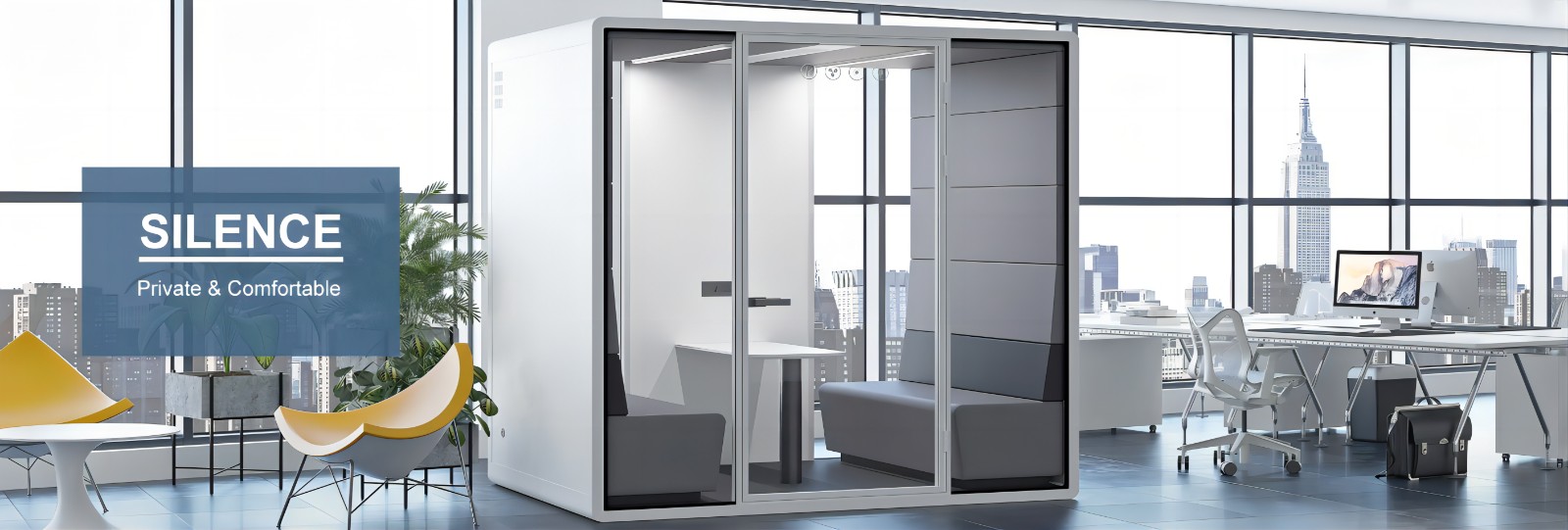
Introduction
Silent cabins, also known as quiet rooms or soundproof booths, are enclosed spaces designed to minimize external noise and provide a peaceful environment. These cabins have gained popularity in various industries, including offices, call centers, libraries, and even homes. As technology continues to advance, the future of silent cabins looks promising. This article will explore the potential development trends of silent cabins in the coming years.
Enhanced Soundproofing Technology
One of the key areas of improvement for silent cabins is soundproofing technology. Currently, most cabins use materials such as foam, fiberglass, or acoustic panels to absorb and block external noise. However, future cabins may incorporate advanced soundproofing materials that are more efficient in reducing noise transmission. These materials could be lighter, more durable, and have better sound absorption properties, resulting in even quieter cabins.
Smart Integration
With the rise of smart technology, silent cabins are likely to become more integrated and connected. Imagine a cabin that automatically adjusts its soundproofing capabilities based on the noise levels in the surrounding environment. This could be achieved through the use of sensors and artificial intelligence algorithms. Additionally, smart integration could allow users to control cabin settings remotely through their smartphones or other devices, providing a seamless and personalized experience.
Multi-functional Design
In the future, silent cabins may evolve beyond their primary function of noise reduction. They could be designed to serve multiple purposes, such as relaxation pods, meditation spaces, or even mini-workout rooms. These cabins could be equipped with features like adjustable lighting, built-in speakers for soothing music, and comfortable seating arrangements. This multi-functional design would make silent cabins more versatile and appealing to a wider range of users.
Eco-friendly Solutions
As sustainability becomes increasingly important, silent cabins may incorporate eco-friendly features. This could include the use of recycled or biodegradable materials in construction, energy-efficient lighting systems, and the integration of renewable energy sources such as solar panels. By adopting eco-friendly practices, silent cabins can contribute to a greener and more sustainable future.
Virtual Reality Integration
Virtual reality (VR) technology has the potential to revolutionize the concept of silent cabins. By integrating VR capabilities, users could be transported to different virtual environments while inside the cabin. This could create a truly immersive experience, allowing individuals to escape from their surroundings and relax in a virtual oasis. VR integration could also be beneficial for various applications, such as virtual meetings, training simulations, or entertainment purposes.
Conclusion
The future of silent cabins holds great potential for innovation and improvement. Enhanced soundproofing technology, smart integration, multi-functional design, eco-friendly solutions, and virtual reality integration are just a few of the possible development trends. As these cabins continue to evolve, they will provide individuals with a peaceful and private space, free from external disturbances. Whether it's for work, relaxation, or entertainment, silent cabins are set to become an integral part of our daily lives in the years to come.
References:
https://www.archdaily.com/959607/the-future-of-soundproofing-in-architecture
https://www.buildings.com/articles/43147/soundproofing-materials
Contact: Jack Zhang
Phone: +86-18823810975
Tel: +86-18823810975
Email: jack@prominencebooth.com
Add: No.52 Lane 1, Xia Pai Industrial Park, Longteng Community, Shiyan Street, Baoan District, Shenzhen City